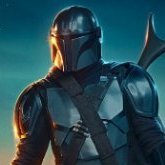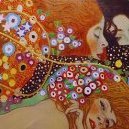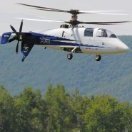Leaderboard
Popular Content
Showing content with the highest reputation on 12/09/2019 in all areas
-

KH T-6/Harvard Kicked Up A Notch: Apr 14/20: Finished!
jimbo and 7 others reacted to chuck540z3 for a topic
Thanks guys! I've been very busy modeling this past week or two, so I'll be able to show how to transform this.... Into this... And alter this crap. Seriously, I've never seen this before.. Ever.... Into this.... These Kitty Hawk kits are a real challenge, but with a lot of extra work, they turn out pretty good! More tomorrow.... Cheers, Chuck8 points -
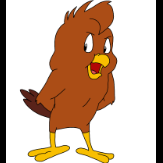
XB-51 Dragon
Paul in Napier and 7 others reacted to Dandiego for a topic
Ok a little more basic work on the wings and engine pods. First the wings. I have added some bulk to the trailing edge of the wing where the flaps will attach. And I have glued up the flaps. I have also beefed up the forward edge that will mate to the wing. And a little putty. Engines have had the inlet and exhaust opened up. Pylons have been beefed up to better serve as an attachment point to the fuselage. And finally I needed a tube to represent the interior of the pod. This is a plastic tube that used to hold pennies, just the right size. Thats all, Dan8 points -
A good time to break out a nice Hasegawa kit over Christmas. I will build the aircraft of Hptm. Adolf Borchers, who flew this aircraft while in command of Stab/ III Jg 52. Borchers would see action during the Spanish Civil War and from the first, to the last day of WW2. He scored 2 victories during the Battle of France and Battle of Britain before being transferred to the East for Operation Barbarossa. He would go on to score a further 130 victories in some 800 combat missions, being awarded the Knights Cross of the Iron Cross. Post war, he was turned over the Russians by the American's, however he made it home, reunited with his wife, Olympic gold medal skier Christl Cranz and set up a ski school which they owned until 1987. Borchers passed away at age 82 in 1996.7 points
-
Trumpeter MiG-3
coogrfan and 6 others reacted to Dave Williams for a topic
I’ll be giving it a go with the Trumpeter MiG-3 with some extras: Aires cockpit QB seat and exhausts Eduard PE Komplekt Zip prop and control surfaces Leaning toward one of the white winter birds.7 points -
HKM Meteor, with T7 Conversion
Tony T and 5 others reacted to Dpgsbody55 for a topic
After the final coat of gloss varnish was applied, I waited three days before removing the masking. I also removed the canopy masking. Like the cover over the cockpit, this was made with Tamiya masking tape and the results are mostly a success. A little scraping was needed, which I did with a small putty spatula as it is curved and has no sharp edges. Next, I added the central cross brace and rear cockpit headrest. The centre brace required a little adjustment to fit, but you have to be careful here or it will sit too high in the canopy, meaning you'll probably have to fabricate another. The canopy is clear resin, BTW. I had previously made up the undercarriage legs using the kit wheels and brass legs. Putting the two together made me a little nervous as the legs had to be pried apart then closed back up, and since brass is a brittle metal, I wasn't sure this would work OK, but it came out well. No further embellishment was done to the wheel wells, which were painted after the final coat of varnish. More masking, always my favourite task... I also added the two retractable steps into the nose, after painting those wells too. Next up I added the canopy opening mechanism was wiggled into place between the two cockpits. This was painted in cockpit black with a natural metal spring, which then had a black wash painted on to bring out the spring coils. This was touched up where paint had been scrapped away, then the canopy was added after adding the two handles to that part, as well as the exterior opening latch. Alas, that part is hard to see as it's gloss black on gloss black. You may notice some extra canopy bracing has been painted on, if you compare the shots above an below with my earlier picture of the canopy. Meteor T7's had two internal braces under the top glazings, so I once again masked the canopy, this time inside, and painted those two braces using my cockpit black. These become more apparent in the shots I'll post in mt RFI article. And it's done. I decided not to do any weathering as none of the pictures I've found of this plane indicate any. This was a peace time plane, so during most of it's service life, it would have been kept up to a high standard, as their Lordships of the Admiralty required and commanded. The model has been a fun build. Most of my time has been spent on the resin cockpit and engines, as the HKM kit is simplicity itself. The standard kit is a very easy build, and makes an impressive model. Adding the resin kits makes it something else again. This Fisher cockpit conversion goes together well, but chopping the nose off a model then adding a replacement section else is not something I've ever done before, in part because I've never found a conversion kit that I was so interested in, but I was also a little doubtful of my own abilities to do it. However, the inspiration I get from seeing other people's builds on this W I P forum has really caused me to lift my game, and I'm well pleased with the result. I have some more pictures of the finished model which I will post in the R F I forums probably tomorrow, together with a little history of this plane. Cheers, Michael6 points -
ICM are preparing an extra set of decals for the model: Gloster Gladiator Mk.I/II in Foreign Services Juraj6 points
-
1/32 ZM Henschel Hs-129 B-2......FINISHED
Daniel460 and 5 others reacted to monthebiff for a topic
Thanks for your comments Troy, ZM call out RLM 66 in the cockpit and RLM 02 behind and in the rear bulkhead area it's pretty difficult to tell from pictures but looking at the way the cockpit tub was mounted I am going for RLM 66 cockpit and RLM 02 rear bulkhead area. Here is where I am at on the cockpit at the moment. Need to find a bit more info on the hinged part of the pilots rear armour as looking at pictures there seems to be some sort of bracing rods attached between the hinged section and the rear bulkhead? Regards. Andy6 points -
Hi all Here is my RAN A4G Skyhawk finally finished 4 months after my last post -it is a shelf of doom rebuild. WIP link here - https://forum.largescaleplanes.com/index.php?/topic/76932-ran-a4g/page/3/&tab=comments#comment-1167121 The main list of parts used and some of the detailing as follows - Avionix A4E resin cockpit Aires resin Wheel bays and white metal landing gear set AMS resin wheels Eduard slat and vortex generators etch SAC Buddy Pod Master refuelling probe and cannon barrels Flight Path USN Carrier Deck set provided the ladder and wheels chocks Maketar paint mask for RAN roundels - fin checks masked by hand - very fiddly! AOA A4 airframe stencil decal sheet Scratch intake and exhaust blanks push moulded wing navigation lights & hazard beacons scratch built forward engine bay door port scratch built detailing added to landing gear & wing pylons various Quickboost bits and pieces like scoops a generous donation of spare Hasegawa A4 sprues from a fellow modeller SE Finally in her allocated spot in the display case. cheers CJP5 points
-
1/32 F-4J Phantom (Complete)
themongoose and 4 others reacted to gmctaggart for a topic
Finally, major painting is done. Tape is off and I can see what the results are. Some paint touch ups for ripped paint and over spray as well as picking out the finer details is next. My next worry is whether the paint will hold up to the application of the dry transfer. Some initial work in this regard has not been promising. Perhaps after a few coats of clear over everything it will harden up the paint surface allow me to apply the markings. Time to tread lightly but until then here are some pics of the results so far. Thanks everyone for reading and your words of encouragement. Gord5 points -
Adding the next colour But before going to the upperside I revisited my RLM78. Just a few passes with heavily thinned MRP and here we are: It's still visible and there's still a little "pre-shading" style peeking through but this will be toned down later with multiple clear coats, filters etc. I almost forgot to paint the underwing codes. No big problem since I had already cut the masks. The inssignia recieved some more off white and I'm happy so far. They're looking a little bit grimey/dirty and not flashing like pure white. On the starboard wing some weird paint lifting occured. I never had problems with Tamiya tape (slightly detacked on a glass plate) before. Especially not with Tamiya/MRP paint. The RLM78 is already reapplied, the black will be sprayed once all crosses are unmasked. Heading forward to the RLM79. As usual I started with a mrable coat and unfortunately I didn't manage to finish this one today. So here we are right now: The starboard wing recieved something new: A more irregular pattern over the "usual" marble coat - applied with one of Radu's masks: The idea is to get more variation and in the next step to add other colours to the base coat - I'm thinking of some browns and beige/tan for the horizontal surfaces. Stay tuned!5 points
-
5 points
-
1/32 ZM Henschel Hs-129 B-2......FINISHED
Rocat and 4 others reacted to monthebiff for a topic
Hi Radu, thanks for dropping in and commenting, I've seen several different cockpit shots showing both RL 66 and also unpainted leather on the armoured side walls. After some thought I decided to go along this route As you can see there is a clear distinction between the painted areas and the leather panels attached. Regards. Andy5 points -
Howdy folks! This Group Build covers 30 years of aerial warfare on the Eastern Front, from 1915 to 1945. The Group Build will run from 9 December 2019 to 31 May 2020. For our purposes, the Eastern Front is defined as the region from Lapland in Finland down to Bulgaria. Eligibility is open to any aircraft or helicopter kit, 1/35 scale or larger, that is no more than 25% complete at the time entering the Group Build. Just a note about RFI posts: it's OK to make them once your build is complete, but please also post the finished photos as part of your build thread. This way, it not only keeps everything in context, but also makes it easier for us to grab those images to include in the GB Gallery. OK, start your engines! Kev4 points
-
Pretty much into it already. Using original Gorilla Glue and Carpenter glue. Next is to template the deck and then glue strips on the template. First have to cut the second bulkhead as it is not cut correctly since new.4 points
-
Howdy folks, Kylie Newton reviews a new large scale pilot figure: Mitches Military Models 120mm Modern Fighter Pilot Thanks, Kylie! Kev4 points
-
Starring: MRP paints. Some profiles show greens and browns for the upper camo, and neutral gray for the bottom. I followed the AJ Press. That looks quite strange, but maybe it's how it is supposed to be. Next the gloss and decals. Stay tuned, Hubert4 points
-
Thanks guys! Now that I've decided to paint the fuselage before attaching the wings, I can lay down my pre-shading. First, I do all of the panel lines. I've also did some darkening around various "waste"' areas such as the exhaust and behind the oil cooler. Next, I'll use my brillo pad and splatter templates to add some texture. In the meantime, I've attached the blades to the prop assembly.3 points
-
I am pleased to see a discussion of this. I have long wished for a definitive Mustang book for the modelers perspective. I see two points maybe three in this. How should a real Mustang look and how should we model the same? Take the Tamiya Mustang which is what I have the most experience with, lots of panel lines and even more rivets. However if you look at the photos added to this thread above it has none of the nuance of the real planes surface and the irregularities that show through the fillers and paints used. So if you fill all the rivets and the proper panel lines you may end up with a very dull looking model that has little visual interest. It may be accurate but it may not be very interesting. Somehow we have to add the nuance that makes it visually interesting. Ideally it almost needs to be accidental. The last Mustang i built, I taped off the panel lines I wanted to keep and then applied lots of filler all over the wings to make the rivets go away. After all of my work some rivet detail still showed. I was happy with the look of it in end especially after I dirtied it up with some weathering. I followed the well known template of what should be smooth finish and what is not. I don’t claim it was the most realistic. I am not convinced that building for realism is terribly interesting. If we all built in a style targeting realism it would become very boring. However I think we should know what is realistic and what is not and judge for ourselves where we want to try to fall in between.3 points
-
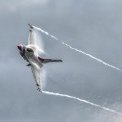
Revel 1/32 Tornado GR1 - FINISHED
LSP_Kevin and 2 others reacted to Stokey Pete for a topic
I may have been handed a lifeline. A good buddy of mine took the cracked valve off and has welded the damage up. I'm gonna give it a whirl a little later on. Keeping my fingers crossed for a chance to get this one finished.3 points -

1/32 ERA-3B Skywarrior - 3D printed / scratchbuilt
HerculesPA_2 and 2 others reacted to Starfighter for a topic
3D printing is a great tool, but you still have to properly assemble the parts... which I sadly didn't do, which resulted in a slightly warped rear fuselage. So, out came the saw... ... Super Glue, files and sand paper. I'll show you the result within the next few days.3 points -
And suddenly it is just about finished! I may do a little weathering to make it like a little more used, but it's substantially done! Better pictures in the RFI asap once I've completed painting the figures: My first Silver Wings kit, but definitely not my last. I'm planning a prototype Hurricane based on the PCM fabric-wing kit, but when my Gladiator arrives........3 points
-

1/32 ZM Henschel Hs-129 B-2......FINISHED
Rick Griewski and 2 others reacted to Radub for a topic
Just follow the kit instructions, everything you need is included in the kit. The whole cockpit mounting system is shown in Arthur Bentley's drawings There are no "rods" at the back. The large head armour piece is hinged and folds back. There are two steel cables between the fuselage bulkhead and the head armour. The purpose of these cables is to prevent the headrest from going forward in a crash. The seatbelts are also attached to the fuselage bulkhead, then they pass through the slots in the head rest. So, in this famous photo you see the cables at the top and seatbelts at the bottom. Hth, Radu3 points -
1:32 Cessna O-2 Skymaster, Roden
Alain Gadbois and 2 others reacted to Ajak for a topic
Thanks guys!, Yes I heard that the landing gear is not very robust, to say the least, I'll need to think a while how I will go about it. Maybe some brass rods - Albion Alloys - would do the job? The pictures above where from the last week to be honest, this is today's status: Engines are ok-"ish" , I'm taking shortcuts, that's for sure, but not so much of this gear will be visible under the hood anyway:3 points -

XB-51 Dragon
Alain Gadbois and 2 others reacted to Dandiego for a topic
Starting to cut up the wings. I will be utilizing my basic construction method, upper wing, middle plastic blank and lower wing. These will all be glued together. I will also be adding some thin sheet metal to add strength and rigidity, I will then create a "pocket" inside the wing that a support from the fuselage will slide into. Clear?? If it is email me so that I can understand. Wings will be incorporating dropped slats and flaps, provisions for the outrigger gear and a hot air exhaust at the very outboard tip. Piece of cake?! ] Small ailerons have not been cut out yet. Dan3 points -
So, we keep moving forward : Propeller Blade and Hub Casting. The small screws (0,7 mm hex) come from T2M. The propeller hub and the rear support of the oil radiator are completed. Tailpipes. The long tube will be molded and then modified to have the right and left. The tubes are bent under very hot water. Checking is essential to see if the tubes pass well between the masts of the float and if the propeller does not chop the float ! For now it’s good !3 points
-

Aeromarine 75/Curtiss F-5-L (Finished)
scvrobeson and 2 others reacted to kkarlsen for a topic
Well initially I started experimenting with first aid Gauze bandage (the bottom of the lower wings still has it's texture from it). But it was a bit too large in scale, so I got into my wife's drawer trying to find something useful. I think there are different kinds of scale 'pantyhose' weaving (I'm no expert) so I asked her if I could 'inherit' a pair with the largest openings, thinking It would give the best chance of letting through some paint. I must say, I'm surprised, I didn't expect the effect being that well. Rigging: When I started out on this build, I was absolutely terrified of the rigging on the 'beast' - Now there is nothing left but to try and get it over with. The many, many eyelets from steel wire and pieces of brass tube. Wires for one side of the wings, some 30-32 pieces ready to be mounted. All the wires are attached to the upper wings. Fitting the scratched struts and turnbuckles on the lower wing. The struts are glued in place using epoxy. Lets see how this goes... Kent3 points -
I added the last few bits I could find in the crate on to the model, calling it done,(canopy not glued down so I can show the office) Remember, I strive for mediocrity Some pics: and it's older brother D as a size comparison Thanks to all who checked in on me, it was a great fun build.3 points
-
ICELANDIC FINE ARTS 1/32 F-4K/M PHANTOM!
Derek B and one other reacted to Robertjon5 for a topic
well guys went to London model show today to check out ICELAND FINE ARTS 1/32 F4K/M SPEY PHANTOM. it finally exists!! ALAN WILSON had the MASTERS there on show. So below are first pics ever? of a proper brit spey phantom. STILL a lot of work and detailing to do. but should be ready by end of MARCH 2020! BUT he is only doing THIRTY to start!! @ £195. nearly half HKM price. told him needs to double or treble it. I have ordered 3 to start. so get in quick! now the pics . one on display is FAA/BLACK MIKE version. But ALL versions will be done. and will have open canopies! and a few pics of his other upcoming models. 1/32 BUCCANEER. 1/48 VULCAN. 1/72 VC 10s etc. and loads more pictures from the show itself in this slideshow. http://s1035.photobucket.com/user/chunky555/slideshow/LONDON PLASTIC MODEL SHOW 8TH DECEMBER 20192 points -
Hi! In an almost suicide attempt I decided to start this build. It has a simple goal - finish the kit as quick as possible, purely out of the box. Wish me success! I was having problems adding my own pictures, I hope I'll figure it out very soon!2 points
-
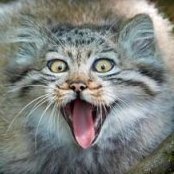
A Little Tugboat
N4521U and one other reacted to kalashnikov-47 for a topic
This an old Revell box-scale tug. I think the scale is 1/118. Tooling dates from the mid 1950's and the fit was pretty bad.2 points -

KH T-6/Harvard Kicked Up A Notch: Apr 14/20: Finished!
jimbo and one other reacted to chuck540z3 for a topic
I really like Eduard Photo-Etch (PE) brass parts, but that doesn’t mean I use all of them as you will see below. I typically use only about half of them, because sometimes the kit parts are better than PE, sometimes you can’t see where the brass is located very well and a lot of the time the PE parts are too tiny and fragile to bother with. I have also developed a skill over time where I can install PE cleanly with no obvious CA glue showing, using micro-brushes and plenty of CA glue Debonder like Great Planes, which I’ve written tutorials about before. Like anything in our hobby, practice with PE makes almost perfect results. As mentioned in my first post, I want this build to be simple and I’m not worried about accuracy, partly because there are too many versions of this aircraft and from what I can find, no two seem to look alike in the cockpit area. That means no extra wiring because the cockpit is busy enough as it is and I have no idea where the wiring would go anyway. I’m also using some of the Eduard PE which appears to be modern, while the kit parts appear to be WWII vintage, so they don’t “talk” to each other anyway. Tip. Dry fit every single part before you paint them, because most of them don’t fit without adjustments. Some holes and notches are too small (or non-existent), some are too big and all of them have lots of seam lines and pin marks to fill and fix as shown earlier. After test fitting, I like to paint all cockpit parts with gloss black lacquer, which exposes flaws, creates shadows and a lot of the parts should be black anyway. I used the Eduard PE for the IP’s, the side panels on the starboard side and a few other areas, while I left the upper cockpit sills as is, keeping the raised relief like the black radios. I then sprayed a gloss coat of X-22 on several parts, to prep them for extensive decal placards from Airscale that looked relatively close to what I found in reference pics. While not perfectly “accurate”, they add a lot of interesting detail to an otherwise boring looking cockpit. Meanwhile earlier, I knocked down the shine of the Eduard PE with a clear dull-coat. After the decals were applied, I knocked down the shine with more dull-coat before putting the many parts together. Thankfully, you can install or remove the seats at the end, which I’m dry fitting here before the installation of fabric seatbelts later. Now a bit of a walkaround from different angles. Although I’ll dirty up a few areas later, this is a restored Harvard as shown in the first post, which is super clean. The Eduard PE instrument panels sure look detailed. Remember, the kit IP is just a decal on a raised surface anyway. While I didn’t add any wiring to the side panels, I added a few wires to the back of the rear IP according to a reference pic, since it can be seen easily through the extensive canopy. The front IP will be buried behind the fuselage, so I didn’t bother with anything on the rear of it. Now a few more tips. The side instruments in the rear must be repositioned to accommodate the front box, which is tilted inwards. The sides of the rear IP glare shield fit very poorly leaving big gaps that can be seen later, so they should be filled and painted as shown. The knobs on the top of the PE levers are created using a few drops of CA glue, then painted black, red or white depending on references. Now the engine. Thankfully there are some really good reference pics of my subject available, like this one. Note the stainless steel rocker arm tubes, which are often painted black instead. Also note those black metal spacers between the cylinders. More on those later. As shown earlier, my heart sank when I first looked at the main engine parts. They are a mess with all sorts of flash and those huge injection remnants that need to be trimmed and cut off. Using a Dremel tool with a diamond burr, I cut off the injection flaws and ground them down, so that they didn’t interfere with the opposite side. The holes also needed to be widened, to ensure a clean fit. Looking at other builds of this kit, the side fit of the engine often has gaps, so I glued and clamped all 9 cylinders at the same time. The side fit is now nice and tight. With the front face dry fitted, the engine is starting to look a lot better. If trimmed properly, all of those rocker arm tubes fit tightly to the cylinders, without the need for glue. I didn’t like the flat spark plug wires, so I carefully cut them off, trying not to destroy the cooling fins on the cylinder sides. Holes were then drilled at the spark plug locations. I then drilled more holes in the circular conduit and added spark plug wires and Eduard PE spacers as shown in the first pic of the real engine. Since the spacers are black, while the cylinder heads are aluminum, I precut masks using the spacers as templates. Otherwise, masking them in the tight spaces would be next to impossible. Ready for paint, which presents another challenge. How do I paint the tubes and circular conduit stainless steel and the center hub blue-grey without making a mess? Something new to me that I bought a few months ago are these Maketar vinyl masks, which are made for wheels and tires. They come in many different diameters and using one that was very close, I masked off the outer portion of the assembly after painting it with gloss black followed by Alclad Stainless Steel. After painting the cylinders with Alclad Aluminum, I glued the center hub to it and reinstalled the wiring and other small parts. Voila, a pretty good-looking radial engine if I do say so myself! I’m afraid that this is the only part of the engine that you will see, because I don’t plan on any open panels behind it that will interrupt the lines of the aircraft. This is also to avoid the picky crap behind the engine, which looks to be very fragile and not worth the effort if I want to keep this model simple. Cheers, Chuck2 points -
The general concensus is to go with Olds' recollections — no "IR" sensor, nor tail "acorn" above the rudder associated with the Itek RHAWS gear, and probably "pointy" Navy inner wing pylons. My F-4 research was disconnected (Weasel etc) for The Phantom Story (1992) and Iron Hand (2002) but Peter Davies talked to Olds on the 'phone, at length, for his Osprey USAF F-4 MiG-killer books and that may be worth looking into. I divested myself of all my Osprey stock a year ago. Hope that helps rather than hinders, Tony T2 points
-
Hi All! The HUD is done; Windscreen in place; I used a very small amount of white glue to tack the canopy in place for the moment, and masked it up with masks from Eduard; More to come soon…. Stefan2 points
-
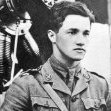
WNW Sopwith Triplane "Black Maria'
BiggTim and one other reacted to Bobs Buckles for a topic
Hello all, Just a heads up for those of you with magnifiers for eyeballs, I recently added a new kind of eyelet to the product range. The *Micro* is tiny and is good for hatch/cowl fasteners on both German and British WW1 aircraft. They can also be used for ultra fine line rigging. Cheers! Von Micro Maniac2 points -

Curtiss Hawk H-75 A7 (ML-KNIL) | SH 1:32
Anthony in NZ and one other reacted to Troy Molitor for a topic
Oh my. That looks wonderful. Thanks for the update Hubert. I really enjoy these rarely seen gems come to light. Thanks for sharing your build with us. More pictures I say you. Lol.2 points -
Creative technique. Great tip and results. Thank you. This is what tortured me way back in 1959 when I was attempting to build this: I could never align the wings. And after I did, the whole assembly kept tipping over. I guess I didn't allow the glue time enough to dry. But what did I know? I was 7. Sincerely, Mark2 points
-
Hi Kev, Please enter me in this as a recipient and as a donation, I offer this:2 points
-
ICM Gloster Gladiator
Alain Gadbois and one other reacted to Rick Griewski for a topic
I recommend buying both Mk. Waiting and hence all the denial may result in mental angst. Treatment will cost more far than an extra kit or two.2 points -
HobbyBoss spare parts?
Andrea Ferrari and one other reacted to Paul2660 for a topic
You might try this email: joanna@trumpeter-china.com Takes a long time, but she did send me a quote and a email address to get an additional part for a 1/16 King Tiger. Entire process about 4 months. Paul C2 points -

Heinkel He-111 H-16 BG VIP Transport Revell 1/32
Alain Gadbois and one other reacted to ShelbyGT500 for a topic
Hi friends It is time for painting - first black primer and pre-lighning of every one of the panels. After that start to paint the aluminum spots - where the chips will be. Wet the spots with some water and cover with salt. And finally cover with rlm 65 and its shades. At the end remove the salt to reveal the chips: And that was for now. Thanks for watching as ever and Cheers guys2 points -
Like this one? Cheers: Kent2 points
-
Work continues.. I have to admit, the news that Tamiya is now releasing an F-51D has kinda taken the wind out my sails. I like modeling somewhat off the beaten path and now that there will be F-51's flooding the market, I've lost a bit of interest but at this point, I have no choice but to continue on... I completed the glare shield. On the underside, I added wiring for the K-14 gunsight control box and scratch built instrument panel lights from styrene rod and stretched sprue. I took a picture of the bottom but it came out horribly. You'll have to trust me that all this stuff is present. Once the fuselage is assembled, it will barely be visible anyway. I then painted the glare shield with a dark grey / black mix and hit it with tan pastels. Every glare shield I've seen in RL has been heavily faded and dusty. Solid black isn't an appropriate color, in my opinion. After that, I built the radiator duct assembly straight out of the box (once completed, very little will be visible and the kit parts are quite sufficient). After that, I glued everything into the left fuselage. I recommend test fitting extensively, in my case I had to carve away some of the Barracuda resin to get things to fit. The weathered glareshield. Note that it's the later type, without the reinforcing ribs. Everything installed in the fuselage side. This really gives you an idea of how cramped the Mustang's cockpit was. Compared to my last build (F4U-1D Corsair), this cockpit is downright claustrophobic. That's it for now, thanks for looking!2 points
-
Nothing special, just a proof that I really jumped on this race:2 points
-

HobbyBoss 1:32 Liberator GR Mk.VI - RAF Coastal Command
Paul in Napier and one other reacted to Iain for a topic
OK - so first off - I'm going to move this out of the Group Build as there's no way she'll be complete before the end of the year. But, on a more positive note - some progress there is... It's taking a while to get relevant kit into the new work area - but have been able to make a start on the kit supplied 'spar' - modifying it to fit with the new wing formers. This has to be done before I finalise the ribs for laser cutting. So - ribs: Spar - with intitial mark-up for material to be removed - a start having been made at the front with a course sanding bar, and at the rear - which needs most of the upper section cutting down to almost the lower line at the rear to accomodate the lower wing trailing edge: I'll dig out my belt sander and shape the rear tomorrow - then adjust the rib drawings to match. Hopefully on a roll now I have the space/tools. Iain2 points -
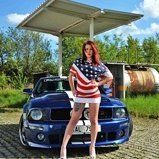
P-51D-15 "Twilight Tear" Lt. Hubert Davis
TenSeven and one other reacted to Miloslav1956 for a topic
Hi all, another Mustang . 1/32 Tamiya kit HGW set belts & wet transfers Eduard Look dashboard Barracuda wheels & cockpit decals All colours MRP All painting mask homemade2 points -
Thanks for the kind words guys! It's a good kit! Not with it's new "G" brother but here's a few of the D (catching a trap) I removed it from its display base a few years ago but, it still has "the wire"2 points
-
Ok, not much work happening, but a lot of pondering. How will I be able to attach the wings, have a strong, stable attachment but have the wings be removable for transport. I have an idea but it looks like I will have to build up the wing with any and all necessary supports before I can commit to internal fuselage construction. The same applies to the engine pods. So I transferred flap and slat locations to the upper surface of the wing. These will be cut out and whatever is left will be utilized to accept the wing support structure that will protrude from the side of the fuselage. No I don't have this entirely figured out yet, fingers crossed. Dan2 points
-
1/32 F-4J Phantom (Complete)
Fanes and one other reacted to gmctaggart for a topic
Getting to the wire now so I am hoping to get some decent progress in during the next week or so. I have shifted attention to the upper surface applied a coat of the gull gray. This is lightly sprayed to keep the rivet and panel line details while building up colour. There is still good modulation and the base colour is giving it a worn look. My only concern is with the gray that I am using as it is look quite warm. I used the Model master match for gull gray, however when I look at photos, of the phantom is looking a lot cooler in tone. Not sure if this is a photo issue or a repaint of old aircraft. I am hoping I can get some feedback on what others thought was a good match for this colour. I am contemplating an overspray of Tamiya Sky gray lighten with white. Please add your 2 cents. Gord2 points -
MH 60 Academy SeaHawk. 1/35 scale.
F-4Phanwell and one other reacted to shark64 for a topic
Wash in process. Darker in the back because of exhausts.2 points -
evening boys & girls well Chuck, there isn't much to show - I only have a standard dremel with a flexi-drive and a small axminster C2/300 mini-lathe - I wish I had a pillar drill, a milling machine and a proper mans lathe, but alas not Thanks Chek - I haven't plans for a book, and I am not sure Kev would put himself through that again - poor guy had to go through 10k raw images to find the ones I had used in my build thread and do A LOT of editing! the time finally arrived to add paint... I am not a fan of the process and find it difficult (which is why I like NMF birds..), but I can't get away with it anymore so after getting the custom masks from Radu I thought I would try the MRP paint range (I used enamels on the Spit). I did some test runs to see how the paint adapts to going on unprimed aluminium and the results with the black for the tail was positive - it goes on really smooth and taked wire wooling without a problem so a start was made.. ..not too many in progress pics, but here is one of the insignia on the wings... ..I put a different black on the lower tail as there are painted over serials here that can still be made out, the idea being I put one black down, then mask the numbers and then the main black for the tail so there is a subtle difference in colour - also set out the rear stripe by setting down equal bits of tape to follow the line with more flexible tamiya white tape.. ..the MRP 'super matt black' is a wonderful colour and I am really happy with how it turned out - bit of a problem where some paintv lifted when lifting the serial masks, but I think I might leave it.. ..wire wooling the surface gives a really realistic sheen and naturally fills panel lines & rivets with lighter dust which makes for a nice weathered effect.. ..the rest are just glamour shots - the fuselage insignia had to be stripped off as the white lifted when I removed the masks, so Radu is doing me another set and I will do these with enamels - I also scaled the nose art name incorrectly so that is being done again too stuff like the prop, the gear and the 'sit' are not right as it's just jerry rigged for the photo's, but the finish line is edging closer... TTFN Peter2 points


